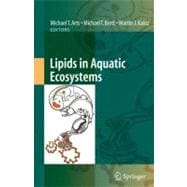
What is included with this book?
| Preface | |
| Introduction | |
| Algal Lipids and Effect of the Environment on their Biochemistry | |
| Formation and transfer of fatty acids in aquatic microbial food webs G++ role of heterotrophic protists | |
| Ecological significance of sterols in aquatic food webs | |
| Fatty acids and oxylipins as semiochemicals | |
| Integrating lipids and contaminants in aquatic ecology and ecotoxicology | |
| Crustacean zooplankton fatty acid composition | |
| Fatty acid ratios in freshwater fish, zooplankton and zoobenthos G++ are there specific optima? | |
| Preliminary estimates of the export of omega-3 highly unsaturated fatty acids (EPA+DHA) from aquatic to terrestrial ecosystems | |
| Biosynthesis of polyunsaturated fatty acids in aquatic ecosystems: general pathways and new directions | |
| Health and condition in fish: the influence of lipids on membrane competency and immune response | |
| Lipids in marine copepods: latitudinal characteristics and perspective to global warming | |
| Lipids in marine copepods: latitudinal characteristics and perspective to global warming | |
| Tracing aquatic food webs using fatty acids: from qualitative indicators to quantitative determination | |
| Essential fatty acids in aquatic food webs | |
| Human life: caught in the food web | |
| Table of Contents provided by Publisher. All Rights Reserved. |
The New copy of this book will include any supplemental materials advertised. Please check the title of the book to determine if it should include any access cards, study guides, lab manuals, CDs, etc.
The Used, Rental and eBook copies of this book are not guaranteed to include any supplemental materials. Typically, only the book itself is included. This is true even if the title states it includes any access cards, study guides, lab manuals, CDs, etc.